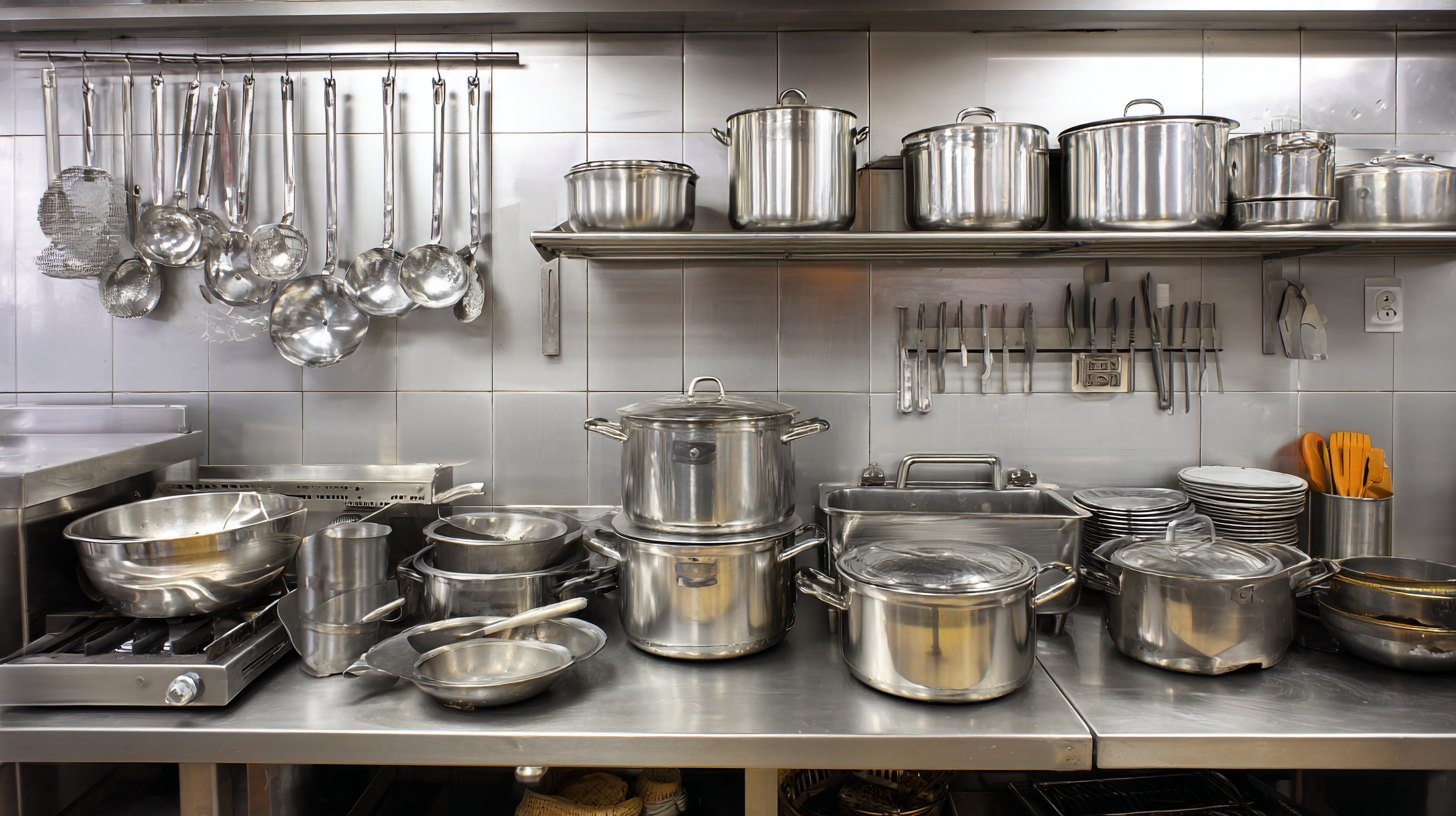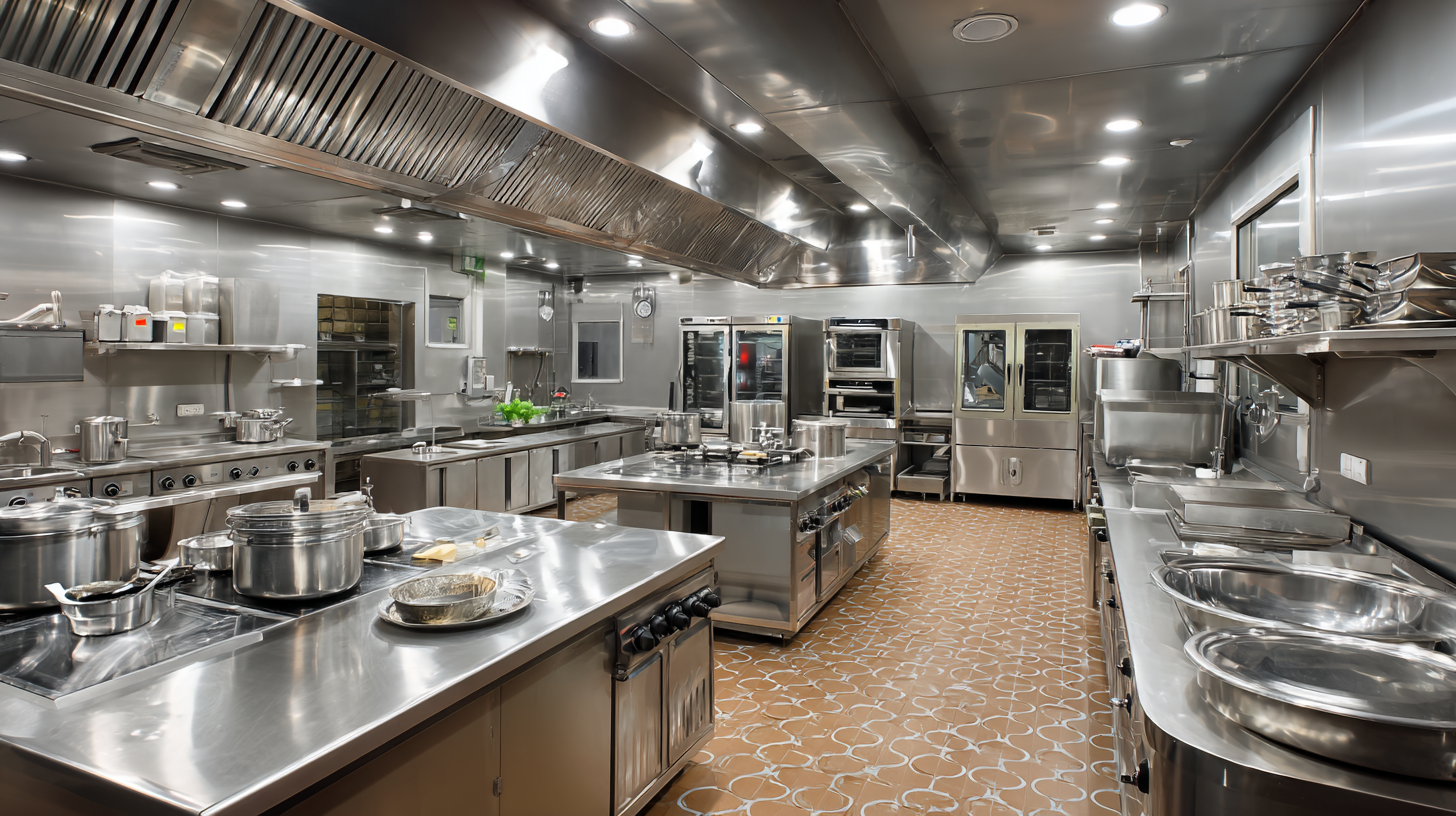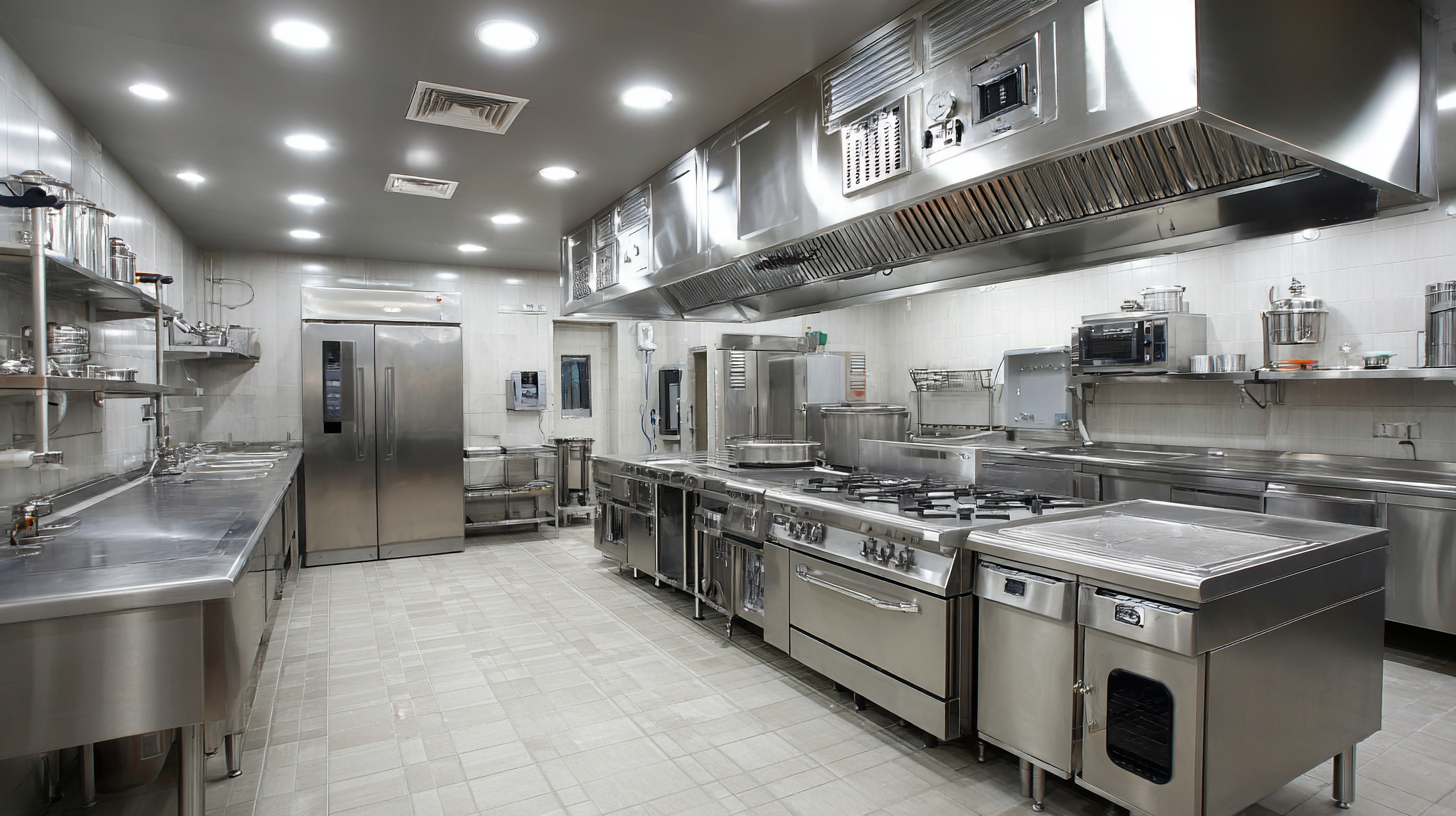How to Select the Best Commercial Kitchen Ware for Your Business
When embarking on the journey of establishing a successful food business, one of the most critical decisions you'll face is selecting the best Commercial Kitchen Ware. The right kitchen equipment can significantly influence not only the efficiency of your operations but also the quality of the dishes you serve. With a myriad of options available in the market, from stainless steel cookware to specialized appliances, it can be overwhelming to determine which pieces are essential for your specific needs. Understanding the various types of Commercial Kitchen Ware and their functionalities is crucial for creating a streamlined kitchen environment that promotes productivity and safety. This guide will walk you through key considerations, ensuring that you make informed choices tailored to your culinary endeavors, whether you're running a bustling restaurant or an intimate catering service.

Factors to Consider When Choosing Commercial Kitchen Equipment for Efficiency
When selecting the best commercial kitchen equipment, it is crucial to consider factors that enhance operational efficiency. As the cloud kitchen market is projected to reach an impressive $42.12 billion in 2023, with a robust compound annual growth rate (CAGR) of 8.16% anticipated from 2024 to 2031, the demand for smart and efficient kitchen tools has never been higher. This trend underscores the necessity for business owners to invest in high-quality, durable equipment that not only meets their cooking needs but also facilitates smoother workflow and productivity in the kitchen.

One of the primary concerns in the commercial kitchen equipment sector is the high upfront costs associated with machinery like dishwashers. The significant initial investment can pose a substantial challenge, particularly for small businesses striving to manage tight budgets. According to industry reports, the growing demand for commercial dishwashers, alongside the forecasted market share increase in related equipment, indicates that smart financing options or leasing solutions may be essential for these businesses to thrive. Moreover, with the commercial cooking equipment market projected to expand from $37.44 billion in 2024 to $54.35 billion by 2032, it becomes evident that efficient selection of kitchen equipment can greatly impact a business's long-term success.
Understanding the Different Types of Commercial Kitchen Ware Available
When it comes to selecting the best commercial kitchen ware for your business, understanding the diverse range of products available is crucial. The commercial kitchen equipment market is projected to reach $95.13 billion by 2027, with increasing demand for dining experiences driving innovation in kitchen ware. From cookware to storage solutions, each type of kitchen ware plays a significant role in enhancing efficiency and productivity in a busy kitchen environment.
There are several essential categories of commercial kitchen ware to consider. First, cookware, which includes pots, pans, and baking sheets, can significantly impact cooking performance. According to the Foodservice Equipment Reports, stainless steel and heavy-duty aluminum are preferred for their durability and excellent heat conduction. Second, storage solutions like commercial-grade containers and shelving are essential for maintaining food safety and organization. The global commercial kitchen equipment market highlights that food storage is a growing segment, with a projected growth of 4.5% annually, reflecting the industry's focus on efficiency and compliance with health standards. Understanding these categories allows businesses to make informed decisions that enhance their operations and meet regulatory requirements.

Evaluating Material Durability and Maintenance Needs for Long-Term Savings
When selecting commercial kitchen ware, evaluating material durability is crucial for ensuring long-term savings. Durable materials, such as stainless steel, are resistant to rust, corrosion, and wear, making them ideal for high-demand environments. Investing in high-quality materials not only reduces the frequency of replacements but also minimizes the costs associated with repairs and maintenance. For instance, plastic wares, while often cheaper, can warp or crack over time, leading to additional expenditures that could have been avoided with a more robust option.
Additionally, understanding the maintenance needs of various materials can further enhance cost-effectiveness. Non-porous surfaces such as stainless steel and enameled cast iron require minimal maintenance, as they can be easily cleaned and sanitized, thereby reducing labor time and increasing efficiency. On the other hand, wooden kitchen ware may necessitate regular oiling and thorough cleaning to prevent bacterial growth, which could accumulate additional costs in labor and materials. Therefore, when evaluating kitchen ware options, it is essential to balance initial costs with the longevity and maintenance demands of the materials to ensure a wise investment for your business’s operational success.
Material Durability and Maintenance Needs of Commercial Kitchen Ware
Assessing Space Requirements and Layout Optimization for Your Kitchen
When assessing space requirements and optimizing the layout of your commercial kitchen, several factors come into play that can significantly impact the efficiency and workflow of your business. According to the National Restaurant Association, 83% of restaurant operators say that kitchen efficiency is a key component in achieving profitability. To maximize your available space, consider the classic kitchen work triangle, which focuses on the optimal placement of the stove, sink, and refrigerator to minimize unnecessary movement.
Tip: Utilize vertical space to add storage solutions such as shelving and racks, which can keep the kitchen organized and free up valuable square footage. Additionally, ensure that there is sufficient space for staff to move freely, as cramped conditions can lead to accidents and slow down service.
Additionally, implementing an efficient zoning strategy can enhance kitchen productivity. Grouping similar functions together—such as prepping, cooking, and plating—can streamline operations and improve service speed. A survey by Foodservice Equipment Reports highlighted that 60% of operators plan to invest in kitchen layout redesign in response to operational challenges.
Tip: Periodically evaluate the kitchen layout and workflow through staff feedback and performance metrics to identify areas for improvement, ensuring that your kitchen remains adaptive to the evolving demands of your business.
Analyzing Equipment Costs vs. Return on Investment in the Food Industry
When selecting commercial kitchen ware, understanding the balance between equipment costs and potential return on investment (ROI) becomes crucial for any food business. High-quality kitchen equipment often comes with a higher price tag, but the long-term savings and efficiency they provide can significantly outweigh the initial expenditure. For instance, investing in energy-efficient ovens or refrigerators not only reduces utility bills but also enhances food preparation speed, minimizing labor costs and increasing overall productivity.
Moreover, evaluating the durability and reliability of kitchen ware is essential. Cheaper alternatives might save upfront costs, but frequent replacements can lead to increased downtime and disrupted service, ultimately affecting customer satisfaction and revenue. Thus, it's vital for food businesses to consider how the right equipment can streamline operations, improve service quality, and foster customer loyalty. By carefully analyzing both the direct costs and the indirect financial benefits over time, businesses can make informed decisions that will lead to sustainable growth and profitability in the competitive food industry.
How to Select the Best Commercial Kitchen Ware for Your Business - Analyzing Equipment Costs vs. Return on Investment in the Food Industry
| Equipment Type | Initial Cost ($) | Annual Maintenance Cost ($) | Expected Lifespan (Years) | Estimated Annual Revenue Generated ($) | Return on Investment (%) |
|---|---|---|---|---|---|
| Commercial Oven | 5,000 | 500 | 10 | 20,000 | 300% |
| Deep Fryer | 3,000 | 300 | 8 | 15,000 | 450% |
| Refrigeration Unit | 7,000 | 600 | 12 | 25,000 | 260% |
| Dishwasher | 4,000 | 400 | 10 | 10,000 | 150% |
Related Posts
-

How to Elevate Your Culinary Business with Essential Commercial Kitchen Accessories
-

Ultimate Tips for Sourcing Quality Restaurant Utensils Globally
-

Enhancing Efficiency in Your Restaurant with Commercial Kitchen Equipment Benefits
-

What Are the Essential Commercial Kitchen Supplies for 2023? A Data-Driven Guide
-

7 Best Equipment Commercial Kitchen Solutions for Optimal Efficiency in 2023
-

Innovative Food Equipment Solutions That Elevate Your Culinary Business
